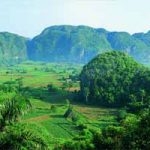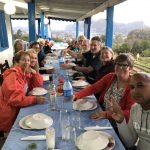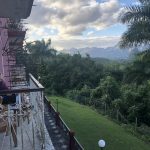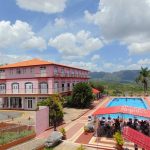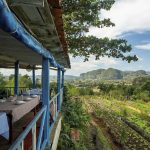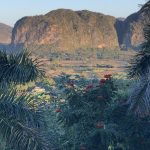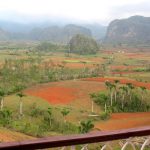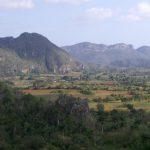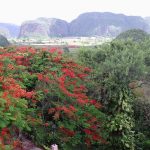Valle de Viñales
You are here for our cycling tours in Cuba, but lets dig deeper
While Cuba has several national parks, none is so beautiful and accessible as the one located in the Viñales Valley. Viñales is known as a stunning destination, and history tells that it was Castro’s favorite place on the island. The valley is surrounded by mountains, tobacco still grows to manufacture iconic Cuban cigars and countless caves add an extra ounce of adventure for the intrepid traveler. One of the most popular caves is the Cuevas del Indio, or Indian Caves, where you can actually take a boat ride completely within the cavern system itself.
Places to keep in mind
You are here to ride your bicycle, and though there is plenty of that, here are some interesting spots. Many you will visit with us but maybe some are worth you taking your time while you are here.
- The Mogotes
- Viñales Botanic Garden
- Mural de la Prehistoria
- Sagrado Corazon de Jesus Church
- Cuevas de Santo Tomas (Caves)
- La Vaca cave
- Palenque de los Cimarrones
Brief History
For centuries prior to the arrival of the Spaniards in Cuba, the numerous caves in the Vinales Valley were inhabited by Taino tribes. The Tainos were related to the Arawak people who populated most of the Caribbean and parts of Latin America. Their population was boosted by runaway slaves, known as Cimarrones, who lived in the caves and interacted with the Taino people. Remnants of their presence can still be seen in some of the caves that are open to the public today.
In the beginning of the 1800s, Spanish tobacco farmers from the Canary Islands migrated to the Vuelta Abajo region nearby. The soil and climate were ideal for tobacco, which became the primary industry in the early history of Vinales. The earliest ranch in the Vinales Valley was established in 1871, being owned by one Don Andres Hernandez Ramos.
As the growth of the tobacco industry boomed in the region, a small village called Vinales emerged in the middle of the 1870s. Its location on the road from Pinar del Rio (the main town) to Puerto Esperanza (the main sea port) made it the ideal stopover along this vital trade route from tobacco plantation to the sea. By 1882, the Western Railroad made it to the Vinales Valley, building a station at the town that still stands.
Several buildings from the early Spanish colonial years still line the main street in the centre of Vinales. Its history is very much alive and preserved in sites like the Pan de Azucar hacienda and the Casa de Caridad. The Municipal Museum on the Calle Salvador Cisneros also showcases the rich cultural and agricultural heritage of the Vinales Valley.
Castro often boasted that this town was his favourite place in the whole of Cuba. The outstanding beauty of the Vinales Valley, complemented by a rich heritage of arts and crafts, as well as traditional tobacco farming, convinced UNESCO to name it a World Heritage Site in 1999. Since then, the town has experienced a major influx of tourism, both Cuban and foreign.
Many visitors come simply to soak in the timeless ambience of the town’s tobacco plantations and to enjoy the traditional music and crafts that abound in this town. Others include rock climbing and caving to their agenda. Yet at its core, Vinales continues to grow tobacco as it has for centuries, and this adherence to its heritage is what makes the valley truly special.
